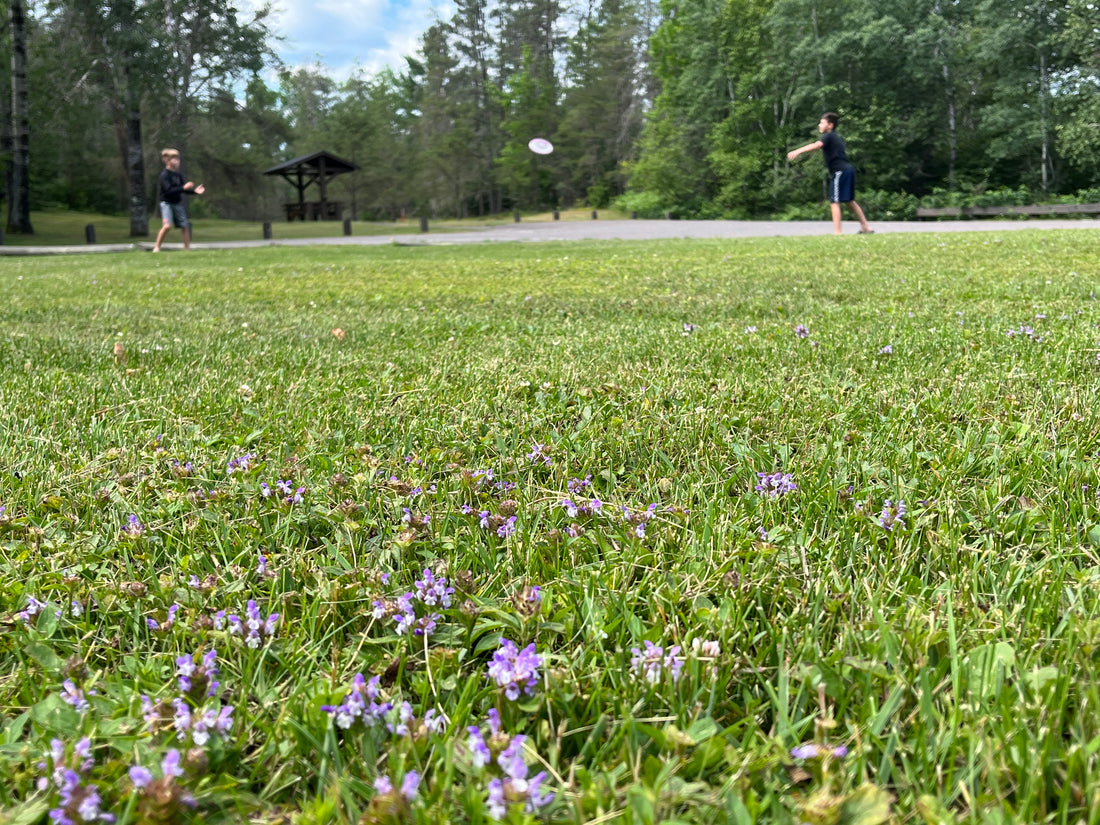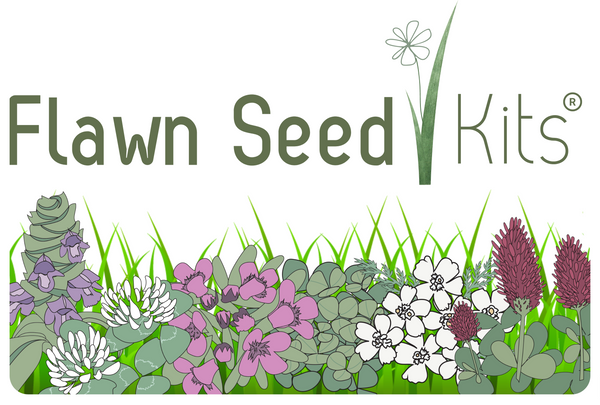
3 Simple Steps to Help your Flawn Survive Summer
Share
#1: Water through hot and dry periods - Seedlings from seed planted this spring do not yet have a fully developed root system and need our help to survive the hottest and driest times of the summer. Make sure to provide water to cool the soil and keep the seedlings from drying out completely.
Here is a clover seedling that was seeded in May and is now about 2" tall and dying from heat and drought stress. It needs water asap!

#2: Don’t let it grow to tall - Grass grows taller than the Flawn Seed flowering plants and if allowed to grow too tall in the first season will crowd out sunlight and space for the wildflowers to grow in. 3.5-4” is a good height to maintain for the first year. After the first year, once the Flawn Seed plants are fully established, you can choose to mow higher and less often.
Once fully established you can allow your Flawn to grow to higher heights like this one where the self-heal is already in bunches about a foot wide. Grass in the shade is also less aggressive than in full sun and gives the wildflowers a better chance of competing.

#3: Avoid Fertilizers and Pesticides – Although it may seem like a good idea to apply a fertilizer to help the Flawn Seed grow in quicker it can actually make it more difficult for the wildflowers to grow in since the already established grass will use the fertilizer to grow thicker and crowed out the wildflowers. It’s never a good idea to be using pesticides on your property and any weed killing products will harm the Flawn Seed plants as well as our environment.
Beneficial insects like this moth on Self-Heal are extremely sensitive to pesticides and can die simply by landing on a flower that was sprayed with a chemical to kill mosquitos for up to three weeks after it was applied.

